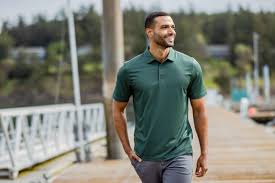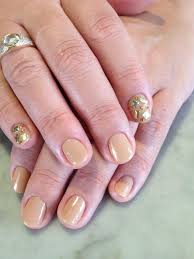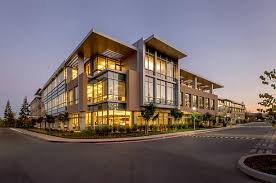In today’s fast-paced, ever-evolving workplace, the line between formal business attire and more relaxed dress codes has blurred. One of the most popular dress codes in many modern offices is business casual, which offers a comfortable yet professional look. But what exactly does business casual mean for men? How can they nail this style while ensuring they remain polished and confident? This article explores the ins and outs of business casual for men, offering tips on how to build the perfect wardrobe for success.
Understanding Business Casual for Men
Business casual is a dress code that is often described as “relaxed professional.” It allows employees to maintain a level of professionalism while also incorporating comfort and personal style. Business casual for men falls between formal office attire (think suits and ties) and casual wear (jeans and t-shirts). While the specific definition can vary from one workplace to another, the core principles remain the same: look put-together and approachable without overdoing it.
The goal is to appear neat and professional without wearing a full suit. The look is smart but not stuffy, giving men the flexibility to express their individual style within reasonable limits. With business casual, the key is to strike a balance between comfort and professionalism.
Essential Business Casual Pieces for Men
To help men navigate the business casual dress code, it’s important to know which items should be staples in their wardrobe. These pieces can easily be mixed and matched to create a variety of looks suitable for the office.
-
Shirts
-
Button-down shirts: A well-fitted button-down shirt is a staple for any business casual wardrobe. Opt for solid colors like white, light blue, or soft pastels, or classic patterns like gingham or subtle stripes. Avoid overly bold or casual patterns (e.g., graphic prints).
-
Polo shirts: If you’re in a more laid-back environment, a high-quality polo shirt can be a great option. Stick to neutral colors or darker tones to maintain a professional appearance.
-
Dress shirts without ties: Some business casual offices don’t require ties, but a dress shirt without one still maintains a sophisticated look.
-
-
Trousers and Chinos
-
Chinos: Chinos are a great alternative to jeans. They’re comfortable, versatile, and look sharp. Go for neutral colors like navy, khaki, grey, or black.
-
Dress pants: In some offices, slightly more formal dress trousers may be appropriate as long as they don’t clash with the overall relaxed tone of the workplace.
-
Avoid jeans: While some workplaces may allow dark jeans as part of their business casual dress code, they’re generally not appropriate in more formal environments.
-
-
Blazers and Sweaters
-
Blazers: A blazer can instantly elevate your look, adding a touch of formality without requiring a full suit. When opting for a blazer, ensure it’s well-fitted and made from a lightweight material.
-
Cardigans and Sweaters: For colder months or more laid-back settings, a well-constructed sweater or cardigan can be a great alternative to a blazer. Stick to neutral colors and avoid overly casual styles like hoodies.
-
-
Footwear
-
Loafers: Loafers are a stylish yet comfortable option for business casual. They come in various styles—whether you prefer sleek leather, suede, or a more relaxed moccasin look, loafers will keep your feet comfortable while still looking professional.
-
Brogues or Oxfords: If you want something slightly dressier, consider a pair of brogues or oxford shoes. These shoes work well with both chinos and dress trousers.
-
Desert boots or Chelsea boots: For a modern twist, desert boots or Chelsea boots can add an edge to your business casual look. Stick to neutral colors like brown or black to keep them appropriate for the office.
-
-
Accessories
-
Belts: Always ensure your belt matches your shoes. Leather belts in brown or black are great choices that add a polished touch.
-
Watches: A classic, simple wristwatch adds sophistication to any outfit without being over-the-top. Avoid flashy or too casual designs.
-
Ties: While often not necessary in business casual settings, a tie can be useful if you need to quickly transition to a more formal look or attend a client meeting.
-
What to Avoid in a Business Casual Wardrobe
While business casual offers plenty of flexibility, there are still a few things that are best avoided if you want to maintain a polished and professional appearance.
-
Casual T-shirts: Save the graphic tees for the weekend. In a business casual environment, even plain t-shirts can look too informal, unless paired with a blazer or cardigan.
-
Shorts: While they might be acceptable in certain very relaxed office environments, shorts are generally a no-go for business casual.
-
Sneakers: While sneakers can be stylish, they are generally too casual for business settings unless you’re in a particularly relaxed industry (like tech startups).
-
Excessive Jewelry: Keep jewelry to a minimum. A simple watch and perhaps a wedding ring are sufficient. Avoid chunky necklaces or oversized rings.
-
Overly Casual Fabrics: Avoid fabrics like denim, flannel, or jerseys, which are typically seen as too casual for the workplace.
Business Casual Etiquette: Dressing for Success
The key to successfully pulling off business casual attire is paying attention to fit, grooming, and the overall impression you give. Here are some quick tips to ensure you’re always looking your best:
-
Fit is key: Whether it’s your shirts, pants, or jackets, make sure everything fits well. Baggy clothes can look sloppy, while overly tight clothing can appear unprofessional. Aim for a tailored fit that flatters your body type.
-
Grooming: Personal grooming plays a big role in completing your business casual look. Keep facial hair trimmed, nails clean, and hair neatly styled.
-
Consistency: While it’s tempting to wear the same casual items over and over, variety is important. Mix up your wardrobe to keep things fresh and appropriate for different work situations.
Conclusion
Business casual attire for men offers a great opportunity to look professional and comfortable at the same time. By investing in the right wardrobe staples, paying attention to fit, and being mindful of workplace culture, men can navigate this dress code with confidence. Whether you’re in a creative industry or a more corporate environment, mastering business casual ensures you make a great impression, all while feeling at ease throughout your workday.




